
There are a number of questions about prosthetic makeup that get asked often.
We put together the top 5 that keep cropping up and do a deep dive into our responses.
To listen to the podcast, you can stream or download from here, or simply subscribe through your favourite podcast app – we are on many, including Spotify, Apple Podcasts, Soundcloud, IHeartRADIO , STITCHER , Luminary and Google Podcasts.
1. How do I match an appliance to a person’s skin tone?
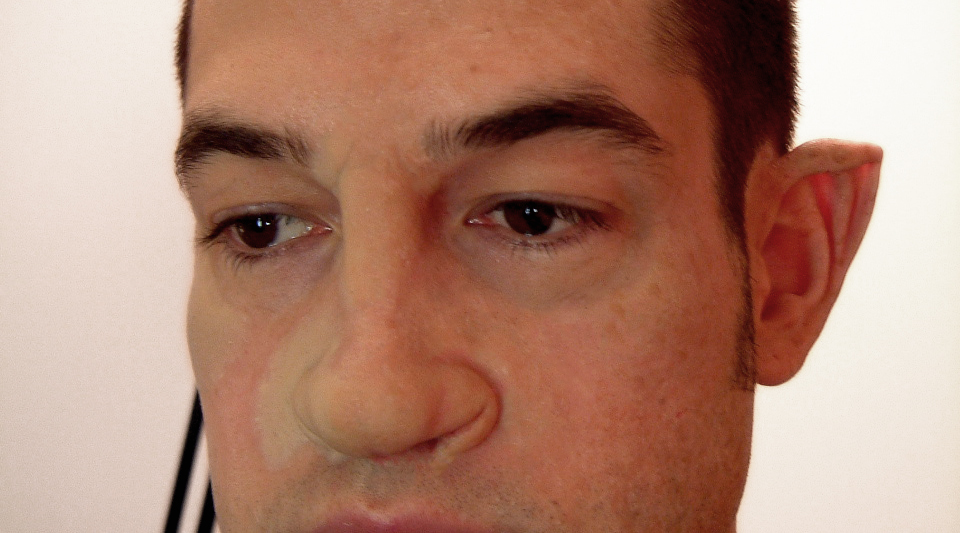
In this response, we are going to assume the face is not covered entirely in rubber. It is much tougher in many ways to only partially cover the face than to entirely cover it.
Download this hefty blog post as a set of notes.
The reason for this is that if a small piece of rubber-like a chin or a nose – is the only fake thing on an otherwise real face, then there is a lot of real skin there to compare your rubber to.
If you are using foam latex, this material is opaque so the painting will involve using an opaque painting medium such as rubber mask grease makeup or more likely PAX paints (a mixture of Pros-Aide and LiquiteX acrylic paints developed and widely used by the legendary Dick Smith). Note that PAX can be a real pain to remove from skin, so there are some things to do prior that may facilitate removal – barrier layer: PPI’s Top Guard, Kryolan’s Marly Skin and Pro Shield, and Benchmark’s Derma Shield are some examples…
Usually, the technique is to either paint the foam latex with a deep red colour to supply the warmth that living tissue fed with blood under the surface has and then cover this with washes of an appropriate coloured flesh tone PAX. You can mix your own PAX using Liquitex paint and Pros-Aide (no-tack is best) or PPI Beta Bond, but MEL Products and Thomas Surprenant’s PAX paints are outstanding.
Because acrylic paint is paler when wet one must gradually build up washes appropriate to the skin tone of the wearer and ensure that there is a gradual blend from the appliance to the skin because a hard edge of colour will be apparent.
Check out this article on painting latex and foam latex using PAX.
If you are using a translucent material such as silicone gel filled appliances, gelatine or a prose aid based transfer material such as PTM all-pro Bondo then the process of painting is different.
These materials appear much more flesh-like precisely because they are translucent so the base tone of the material should be mixed into it intrinsically before the piece is actually cast.
Once the piece has been applied and edges blended out the task of painting is usually to apply thin washes of makeup most commonly alcohol-based colours such as Skin Illustrator or similarly thinned cream-based make-ups which will allow the natural-based tone of the appliance to show through. Thin, translucent/transparent washes are key for detailing regardless of the prosthetic material; the goal is to mimic human skin.
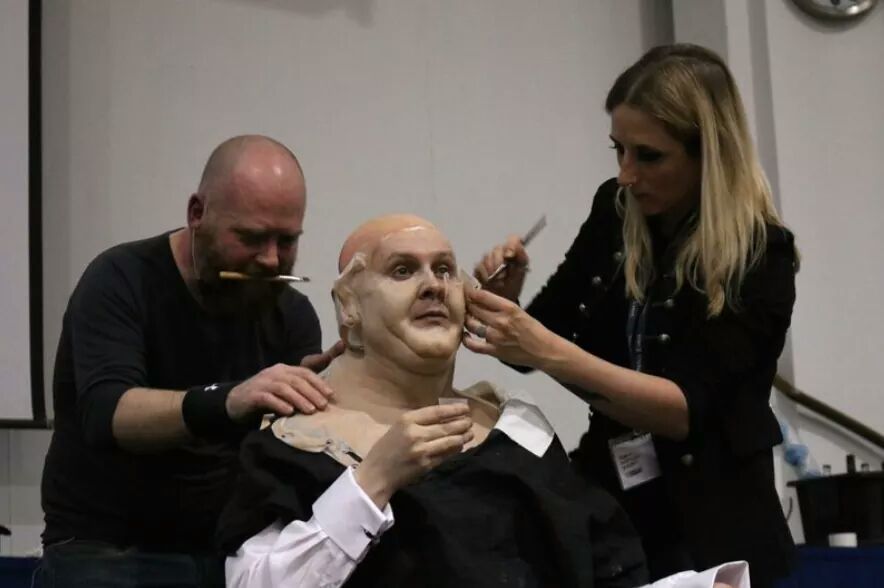
The trick with this kind of painting is to apply just enough colour to make the appliance appear like it is the skin around it and then it belongs there. It’s very easy to apply too much make up and practices required to ensure that you apply a small enough amount rather than be heavy-handed and apply too much.
See this blog post we did on painting appliances – it has a downloadable workbook too.
Check this massive blog post we did on mixing skin tones in silicone – includes video.
A post with video of a gelatine appliance application and colouring is here.
2. How do I ensure a good edge on an appliance?
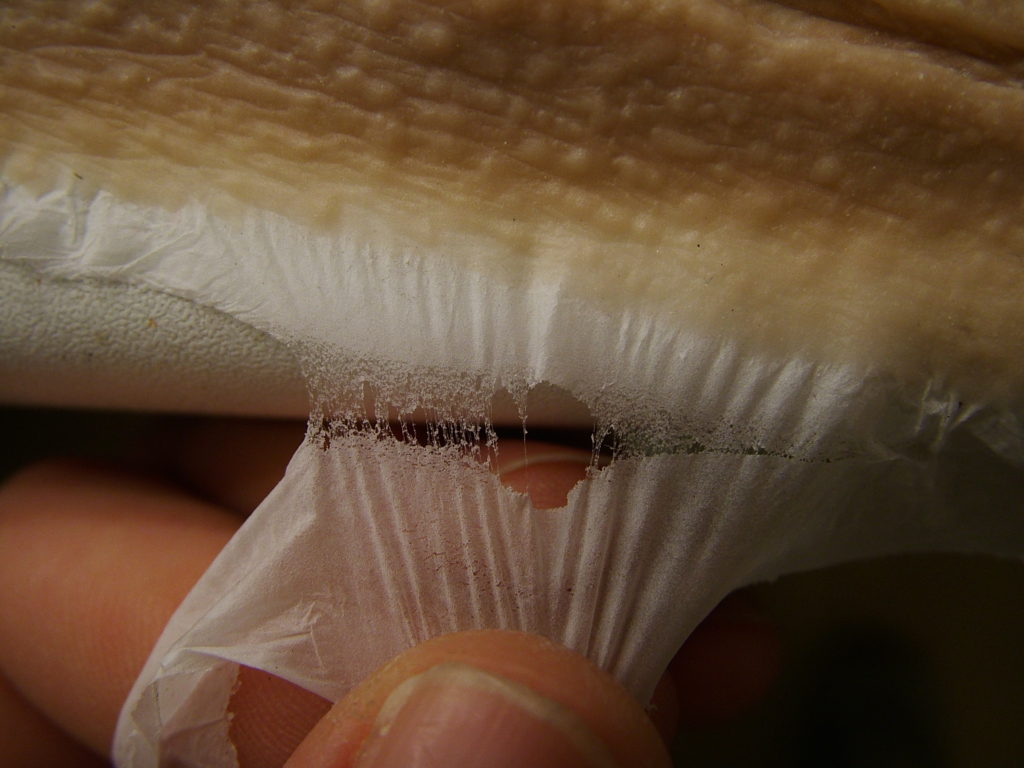
Creating good edges is kind of like personal hygiene…if you do it properly it goes unnoticed. It’s only when you stop washing that it attracts any attention! Thus, by definition ‘ good’ edges are not noticed – if you do a good job of blending them, then they are not there to be seen.
I often get asked what magical material and they drizzle all over their terrible edge to make it disappear. The simple truth is that perfect flawless edges do not happen naturally and without effort. In order to arrive at a good edge you need to sculpt something beautifully, make a great mould, cast each appliance perfectly, and maintain and look after that appliance before it is applied.
Acetone and alcohol can be used to melt cap plastic and witch hazel or warm say line can be used to help dissolve the gelatine edge. However, this has been expanded upon in many people’s minds as a way to make edges disappear regardless of how bad that edge is.
A mixture of spirit gum and 99% IPA in a 50/50 solution will help ‘melt’ a less than perfect foam latex edge; what happens is that the liquid is absorbed into the foam latex, and as the alcohol evaporates and the spirit gum dries, it shrinks, causing the foam latex edge to recede as well, often disappearing completely.
The simple truth is you need to make your appliance have a good edge and look after the appliance all the way through to application. If you end up with a bad edge from a faulty mould or a badly cast appliance or something went wrong during the application, there are some things you can do to fix it such as filling the offending edge or cover it with a pre-made patch or blender. Thickened Pros-Aide – can be used to build up to a bad edge gradually, but should not be counted on; it’s the same as saying, “we’ll fix it in post.” Strive for good edges to begin with.
Check out this in-depth blog post all about edges.
Check out this video (below) which looks at how to repair damaged edges during application.
Click here to get a downloadable workbook supporting the information contained in this video.
3. How can I create good work without spending a fortune on materials?
It takes money to make money. Making and applying prosthetic appliances can be very expensive. The materials involved are used on skin and often that skin is on an expensive actor who can afford very good lawyers should you prevent them from being able to earn money because you damaged them.
This being the case it is understandable that people who wish to practice their craft in order to demonstrate to others what they’re capable of could be in for an expensive time of it if they attempt to create the things they see from big productions and whose makeup was created using the budgets from these big-budget shows.
The important thing to remember especially when trying to flesh out a portfolio of work is that you are seeking to display competence and creative ability. Nobody is expecting you to have dozens of flawlessly finished high-end appliance make-ups from productions when you are starting out.
The trick is to do the very best things that you can with whatever you can get your hands on. For example, Jack Pierce built up Boris Karloff’s forehead for Frankenstein every day from scratch using cotton and rigid collodion. In this episode of the podcast with Neill Gorton, we discussed 3 examples of what somebody could do for not a lot of money to create good portfolio pieces. These were:
1. Sculpt self-portraits with clay, spending just 30 mins a day and reuse the clay to practice sculpting. Mirror, lamp and you. Do this for 30 days. Take a photo each day of what you did in the time, and rip the clay up and reuse it the next day. Repeat.
2. Sculpt a face or creature face onto a board. Make a plaster mould of this and make a latex face mask. Avoid expensive silicone in the first instance, just stick to the basic materials.
3. Highlight and shadow makeups. The cornerstone of everything, modifying forms with just highlight and shadow using a few brushes and a makeup palette such as the 12 colour ‘Supracolour’ B Palette from Kryolan.
A few other things you could consider is to sculpt something and paint it. For example, you could sculpt an appliance in plaster lean onto a lifecasting, stipple a couple of layers of latex over the whole thing and then paint this with acrylic paint to your desired finish. Photograph this finished piece and then you can simply peel off the dry latex leaving you with a reusable plaster head and plastiline, ready for something new.
Don’t feel you always have to sculpt, mould, cast and apply in order to show your skills off. If you are good and you have talent then this will be evident in these simple steps. Similarly, if you have weak spots and there are things you need to work on, these too will be revealed by going through those simple steps.
Sculpting something and photographing it, or sketching something even as a simple pencil drawing is sufficient to give you the opportunity to reveal what you are capable of and at the very least will reveal what you need to work on when you show this to others from whom you are trying to get work or whose ability can assist you to improve.
A key to improving is repetition. Just keep doing it over, and over. You’ll be out of your comfort zone to begin with, but soon you’ll begin to feel more comfortable. Then, take yourself out of your comfort zone again. Little by little you will become good.
4. How do I get work?
The Internet has democratised many things which previously excluded a lot of people by limiting access. Like some kind of gatekeeper, publishers, record producers and agents sat between an enthusiastic talented individual and their career. Desperate for favour and to stand out from the crowd, people would vie for that individual’s attention in the best way they knew how. It doesn’t hurt to be adaptable.
Nowadays a great many things have been blown wide open by virtue of the Internet. If you wanted to write a great book, go ahead and do it. If you can’t get the attention of the publisher (and frankly who could, their offices were stacked with unread manuscripts because there’s only so many hours in a day) then simply bypass all of that and self publish on Kindle.
If you want to be a successful musician, you don’t have to to send demo tapes to radio stations in the hope of getting picked up. Nowadays you don’t even need instruments, you can loop tracks and throw together an album of your own making on a laptop and published all to your own channel.
The trouble is, if you can do this so can millions of others. The difficulty now is that you are vying for attention in a world where there is so much to distract us all. The key is persistence and determination. And the ability to follow up and follow through. That’s where the majority of people fail.
This being the case your job essentially remains the same in that you have to appeal to the right kind of people the right time with the right skills. Although there are many talented people, they don’t all have the same desire or specialist skills for everything.
The film industry is a massively varied place to work, and its unique demands are not for everybody.
Getting paid work and making that your major source of income, has always been very hard to do in make-up effects and prosthetics. However, the amount of prosthetics often being made and used nowadays is incredibly high and often huge teams work on massive productions which can mean smaller productions and other jobs such as commercials and dailies will need people to fill the vacuum left by these larger jobs.
To get work in a prosthetic studio, it is vitally important that you understand what they do and who they need. The the type and amount of work being done any given time changes often depending on a number of factors, so it pays to be multiskilled and able to do a number of different jobs.
Get familiar with the processes and the kind of work involved in making prosthetics and learn the names of those who are already doing it. Study their credits and what they have worked on, who they work with, and study the quality of what they do. If you go to the movies, stay for the credits and see the names of people who did the work you want to do.
People pay to have their problems solved. That’s what we all do. The trick is to find out whose problems you can solve and then get really good at solving them so that you can be where those problems are taking place in order to be of service to someone else.
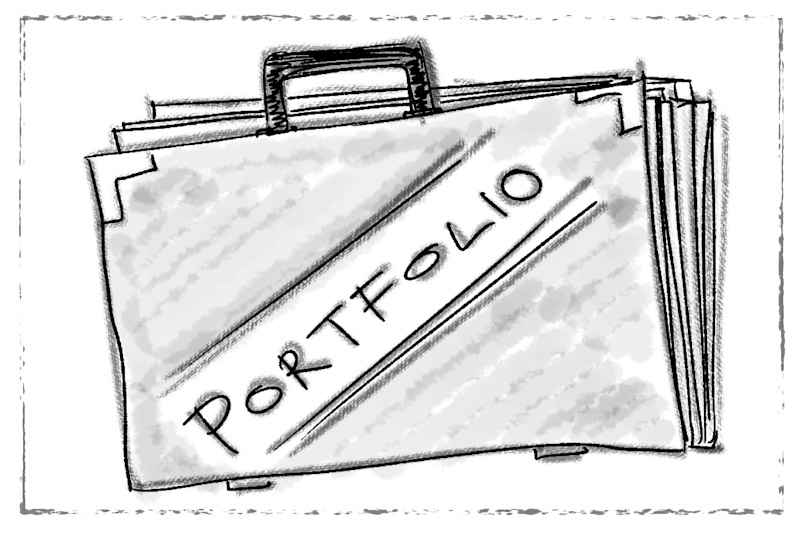
Step 1 is to assemble a good portfolio both digital and hard copy. The people who make things do like to hold stuff in their hands as they are understandably tactile types. Make sure it is your very best work, and if you find it lacking (seek professional advice and criticism) then work to strengthen it.
Step 2 is to get in touch with the people who hire people and get in front of them with your portfolio. This may be the result of a lot of work beforehand such as emails, phone calls, and visits, or meetings at trade shows and events. When effects shops are busy they are often not able to see folios, and when they are quiet they’re probably not hiring. The trick is to be persistent without harassing and try and find that sweet spot when you can get in front of and display your work.
Obviously, a portfolio can be viewed online but you and your work are two different things and somebody paying you to do stuff will want to see you as well as your work.
Check out ScreenSkills, an registered charity organisation which aims to ensure the skills required for the industry are maintained.
ScreenSkills is the industry-led skills body for the screen industries. We work across the UK to ensure that film, television (including children’s and high-end drama), VFX (visual effects), animation and games have the skills and talent they need.
It’s also worth mentioning your geographical location compared to where the work is. If you live a looooong way from where the majority of the work is taking place, this is something potential employer may take into consideration.
There’s no way to game the system; there is no trick or secret backdoor which gains entry. It’s a relatively small industry staffed by very enthusiastic individuals. The best way to get work is to be good, be pleasant to be around, and be persistent without being irritating. Conversely, if your folio is severely lacking and you’re unpleasant and annoying, word will get around.
Maintaining a professional and appropriate social media status is important. You can use social media such as Instagram to show your work, your processes, and your diligence. It can be a great way to keep potential employers up-to-date with your work.
If you are somebody that regularly posts a lot of negative things online, or runs to a keyboard every time something goes wrong in your life, then this similarly can work against you. Simply put, an employer who maybe one day in the position of having to put you in a difficult situation is going to think twice about hiring somebody who is very reactive to their situations and who make public every little incident that takes place. While there are folks in the industry who do that, you don’t need to be one of them.
5. Will computers take over the work of makeup artists?
Yes and no. This is a very common question the people to ask, and a very sensible one. The simple truth is that over the years CG (computer-generated) has exploded and become incredibly sophisticated and realistic. It’s also true to say that it is not cheap nor is it easily done.
Computers are still just a tool and only as good as those that use them. The people at work in visual effects using CG are often thought of as not responsible for the work their department produces. “The computer does it, right?”.
Of course, nothing could be further from the truth, and the technology is only as good as the people that use it. There’s bad CG just like there are bad make-ups. It’s not the tool that’s the problem, it’s how it’s used by the people that are using it. The computer is an economiser. It doesn’t actually do the work for us, but it makes our jobs easier to do (sometimes).
Nobody wants average or mediocre, everyone wants the best all the time. This puts huge demands on whoever it is that has to create those things.
Essentially CG and make up a just different tools using different methods to achieve the same end. Both are attempting to create a realistic illusion in the best way possible. Sometimes it makes sense financially and practically to do something as a make up, other times it may be better to use CG. More often than not it’s a combination of the two which keeps the audience guessing as to how it has been done.
If there’s a trend at all, it’s toward studios offering both practical and digital effects rather than one shop doing the digital shots and another doing the practical work. Communication and effectiveness improve when the work can be done under one roof.
It’s often the case that very good make-up effects have been mistaken for CG simply because people expect computer-generated effects to be flawless.
A lot of digital technology is used in practical effects such as designing things in the ZBrush, Photoshop, as well as using simple visual effects packages such as After Effects.
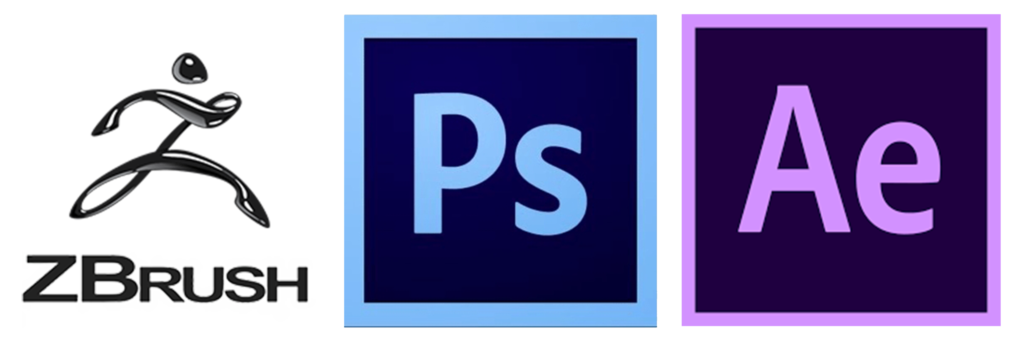
Nowadays we are seeing a lot of crossover where something from a previously practical only department will produce digital renderings which can then either be produced physically by a 3D printer or some kind of milling machine and sent through to visual effects to be used in the creation of CG solutions.
GIMP: Free Photo Editing Software
SULPTRIS: Free Digital Sculpting Programme
Molds are now fairly commonly being printed, and lifecasts are being scanned in addition to the traditional alginate or silicone lifecasting. While expensive technology, it can be a cost saver based on someone’s time – a full-body 3D scan takes much less time than a traditional body lifecast, so savings could be significant.
The adoption of ZBrush demonstrates quite clearly that the ability to create realistic effects through sculpture, painting and design reside in skilled individuals and not in software. Great software will not make a great sculptor out of a poor sculptor. As time goes by we going to see more and more crossover where the sensibilities and methods will remain the same but the materials and techniques and employing these methods will change.
For example, being able to composite digitally sculpted elements into the footage, or create prop sections to be filmed as elements and then combined digitally into footage will require people to understand both the needs and ‘work pipeline’ of practical and digital effects.
Basically there are a lot more effects happening nowadays both digital and practical. There is no reason why somebody who creates effects using makeup could not also be capable of doing some elements of this digitally, without being exclusive to one or the other.
Just as we have adapted and have assimilated digital technology into our everyday lives (most people just didn’t use keyboard every day 50 years ago! Now, almost everyone needs to be able to type in order to get through their day). So too can we embrace and enjoy the option to expand what we are capable of as artists instead of seeing them as two separate camps. Together, practical and digital effects are greater than the sum of their two parts.
Thanks for getting through this far! If you want to get in touch, leave us a voice message on our shiny new feature then we’d love to hear from you.
Email as usual stuartandtodd@gmail.com but you can ask a question, say something nice or even leave us an intro to the next edition of the podcast!
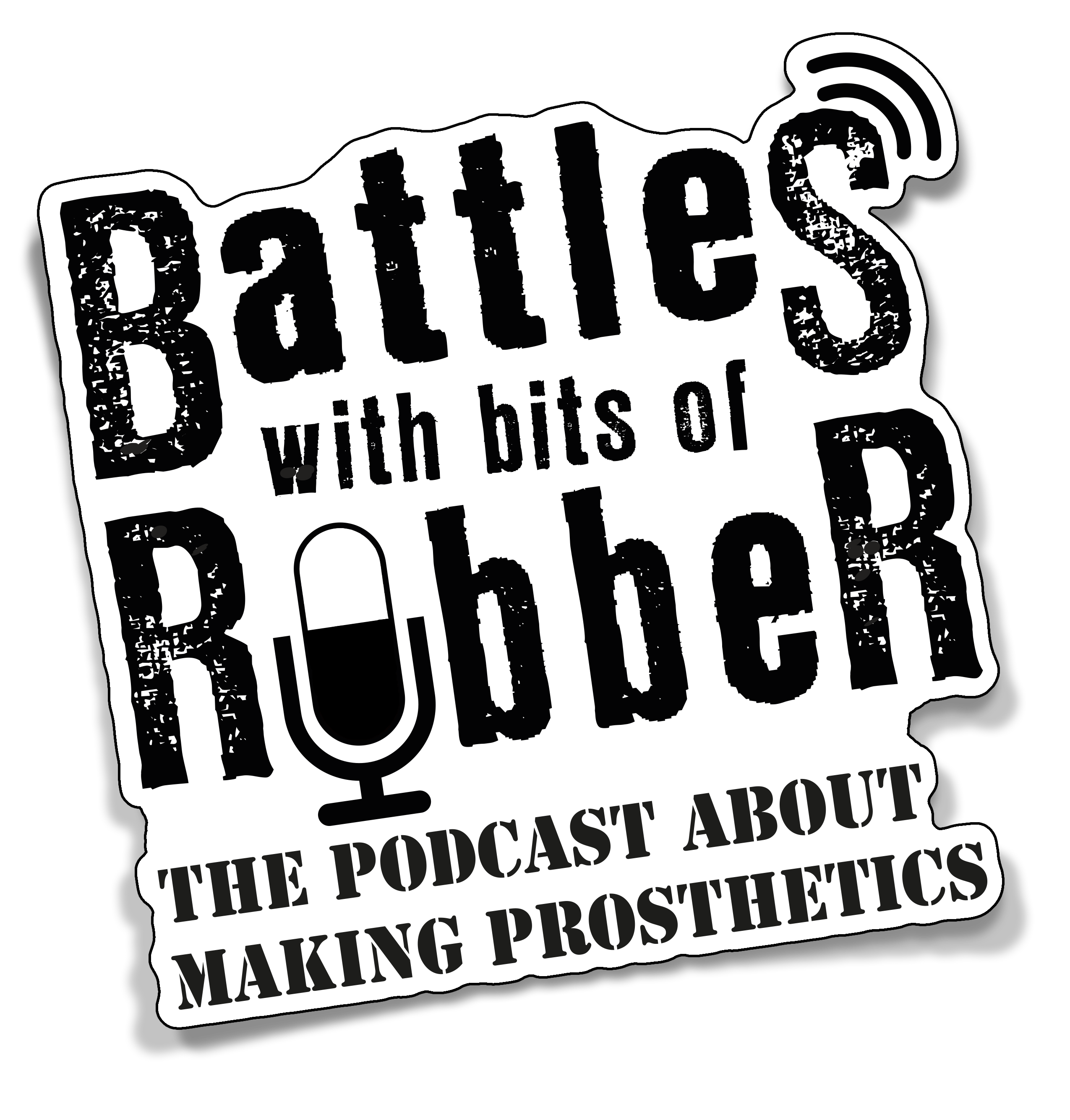

 #52 – Brandon & Jacquie Ryan
#52 – Brandon & Jacquie Ryan